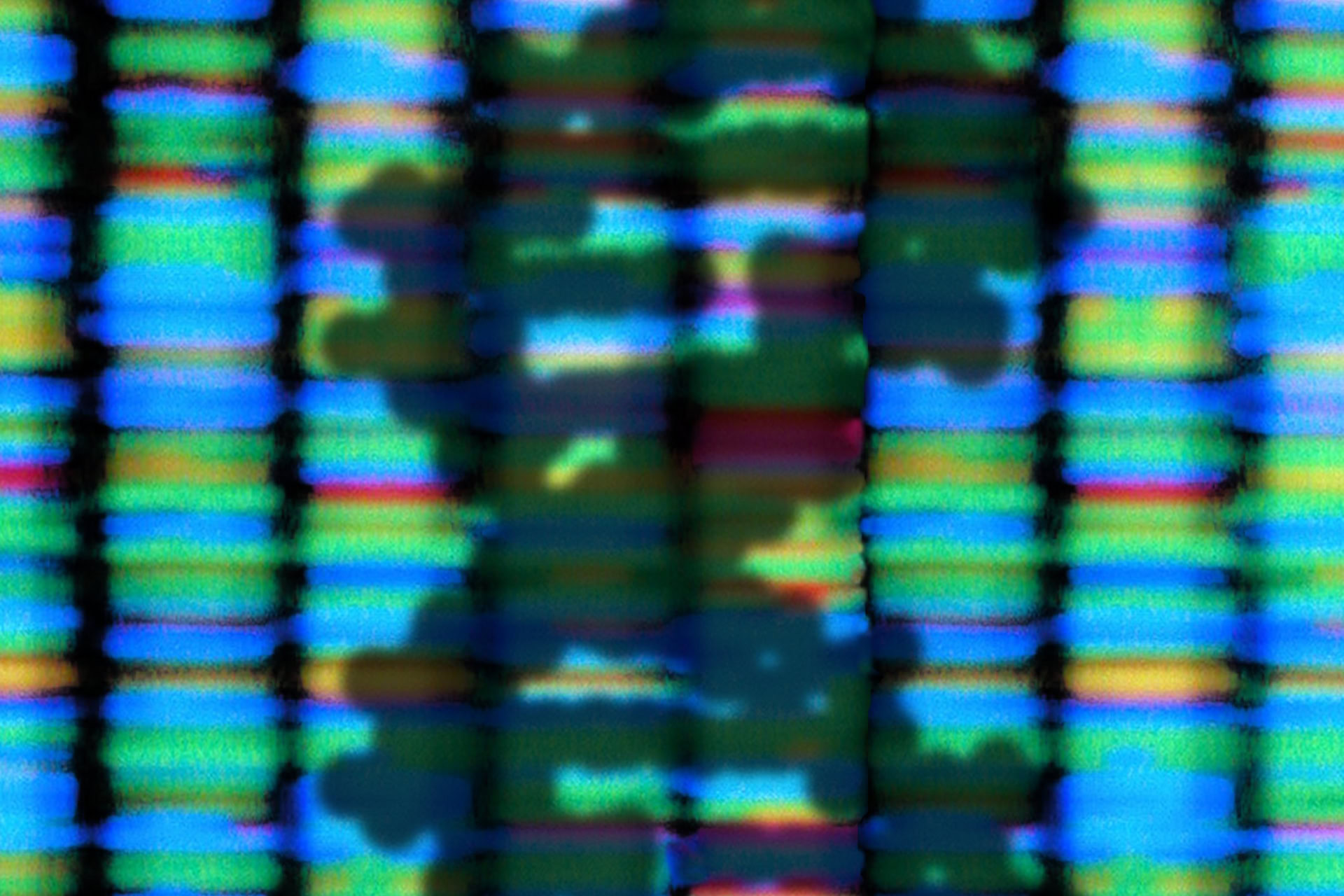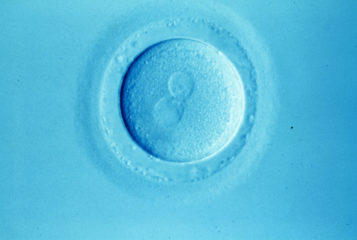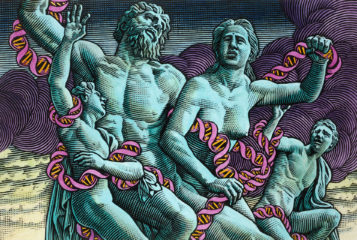In their latest study, published in the Nature, Shoukrat Mitalipov and collaborators, including Juan Carlos Izpisua Belmonte, reported on two potential 'gene correction' strategies that can help patients with mitochondrial diseases (1, BioNews 811). Both approaches are built on the idea of mitochondria segregation phenomenon, reported for the first time by a group from the Mayo clinic in Rochester, Minnesota(2).
Basically, in proliferating cells the mitochondria segregate spontaneously and, if we start with a heteroplasmic cell containing a mix of healthy, wild-type and mutation-carrying mitochondria, after multiple cell divisions daughter cells will segregate into three major groups. The first will contain predominantly healthy, wild-type mitochondria with a few-to-nil mitochondria that carry the mutation, while the second is quite opposite — a vast majority of mitochondria will be carrying the deleterious mutation and almost none will be healthy. The third group will be heteroplasmic, containing various degrees of mixed normal and mutation-carrying mitochondria.
To cut a long story short, if the cells with few-to-nil mutation-carrying mitochondria are pluripotent, such 'gene-corrected' cells could in theory be used for therapeutic interventions based on regenerative medicine. The authors demonstrated that such 'gene-corrected' pluripotent stem cells recovered completely metabolic function when differentiated into neural progenitor cells or cardiomyocytes.
The next obvious question is: can this beautifully executed work be translated into treatment? How we can use these 'gene-corrected' pluripotent stem cells to help people affected by debilitating mitochondrial diseases or prevent second-generation transmission of mitochondrial DNA (mtDNA) defects?
Given the complexity of the technology, costs and risks involved, the strategies described here will, I believe, remain as proof-of-concept studies and are unlikely be of practical use in clinical medicine in the foreseeable future.
We are still in the dark when it comes to exploring the regenerative potential of human pluripotent stem cells. In addition to a single clinical trial based on induced pluripotent stem cells (iPSCs), there are only a handful of clinical trials with human embryonic stem cells (hESCs) ongoing worldwide. None of the targeted diseases are directly pertinent to patients with defects in their mtDNA. First we would need to demonstrate that pluripotent stem cells, either hESCs or iPSCs, could be useful in alleviating symptoms of disabilities linked to mtDNA defects. Mitochondrial encephalomyopathy, lactic acidosis, and stroke-like episodes, which are often shortened to MELAS, can result from mutations in one of several mitochondrial genes. Symptoms are broad, from muscle weakness, seizures, vision and hearing loss to hormonal imbalances, dementia, kidney and heart problems. Another, more severe mitochondrial disease, Leigh syndrome, is characterised by progressive loss of mental abilities and motility. Patients with Leigh syndrome typically die within a few years, most often from respiratory failure. So, what we should do with 'gene-corrected' pluripotent stem cells? Where to start? Which tissue should we try to regenerate first?
Even if we have answers to all these questions, do we still need autologous 'gene-corrected' pluripotent stem cells? The current strategy of bringing iPSC technology to patients, already ongoing in Japan and starting in a few other countries, is to generate iPSC banks from individuals homozygous for an HLA (human leukocyte antigen) haplotype. For example, just one donor homozygous for the most common HLA haplotype would be sufficient to provide immune-matched cells to 10 percent of the Japanese population, whereas 140 iPSC lines from hand-picked donors homozygous for a specific HLA haplotype would cover 90 percent of the whole nation. Ten or more years down the road, when banks such as the Clinical iPS Cell Bank of Kyoto (CiBK) become a reality, making 'gene-corrected' iPSC lines from individuals with mtDNA defects would be unnecessary and obsolete. A clinician would be able to pick an iPSC line with matching HLA haplotype of-the-shelf and use it for tailored treatment of Leigh syndrome or MELAS.
Can we then exploit the strategies described in this paper to prevent second-generation transmission of mtDNA defects? Theoretically, yes. We know how to generate eggs from the mouse iPSCs (3). Those eggs, when fertilised, can develop into embryos, which would give live and normal pups. By the same token, we could learn how to generate eggs from human iPSCs. Once we have that in our hands, the eggs generated from 'gene-corrected' iPSCs of mitochondrial disease carriers can be fertilised in vitro and used for assisted reproduction, ceasing the transmission of mtDNA mutations to the next generation forever. It sounds logical and simple, however, humans are not mice and the risk of developmental abnormalities is enormous — much higher than the current method of using donor eggs with healthy mitochondria. We cannot predict how reprogramming and/or differentiation will affect the genome and how that will reflect on the developmental competence of manipulated egg.
However, we can go a step further and lower the risk by taking out the nucleus from a normally developed egg, which has mutation-carrying mitochondria, and transfer it into an egg derived from a 'gene-corrected' iPSC that will have the nucleus removed upon differentiation. In such a way, the origin of both mitochondrial and genomic DNA in the newly created egg will be from the same individual, and the DNA in neither the mitochondria nor the nucleus will be subjected to direct manipulation at all. Sounds cool, but is this all worth of doing just to avoid using donor eggs as a source of healthy mitochondria? I do not think so. Though, I might be wrong. However, I am right about one thing: even if becomes technically possible, it will be quite expensive and who is going to pay for this? The NHS, for sure, will not.
Sources and References
-
1) Mitalipov S et al. 'Metabolic rescue in pluripotent cells from patients with mtDNA disease'
-
3) Hayashi K, Saitou M. 'Generation of eggs from mouse embryonic stem cells and induced pluripotent stem cells'
-
2) Nelson TJ et al. 'Disease-causing mitochondrial heteroplasmy segregated within induced pluripotent stem cell clones derived from a patient with MELAS'






Leave a Reply
You must be logged in to post a comment.